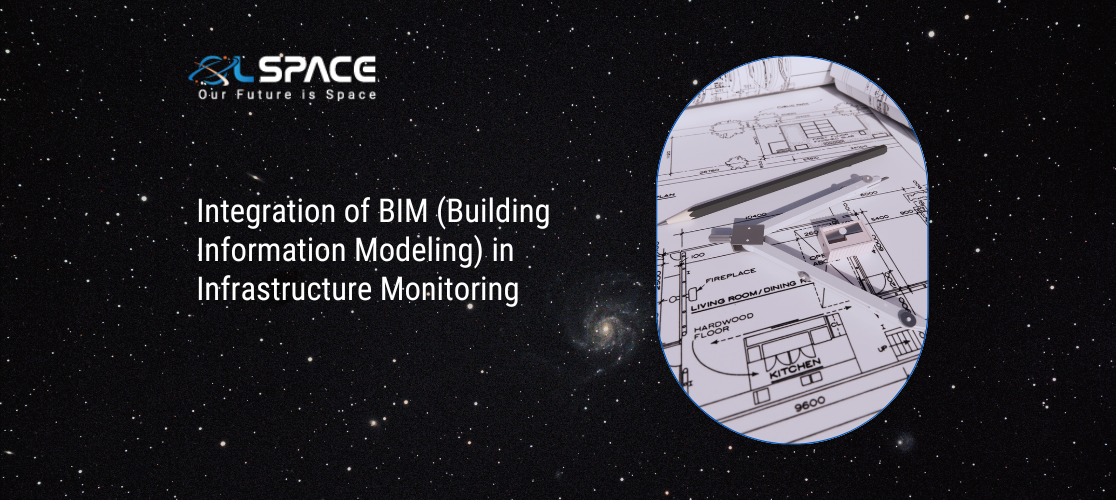12 December 2023
Integration of BIM (Building Information Modeling) in Infrastructure Monitoring

Building Information Modeling (BIM), long recognized for revolutionizing the design and construction phases of infrastructure projects, is now extending its transformative impact into infrastructure monitoring. This article explores how the integration of BIM in infrastructure monitoring enhances decision-making, facilitates asset management, and ensures the longevity and efficiency of critical infrastructure.
1. BIM in Infrastructure Lifecycle:
Design and Construction: BIM creates a digital representation of infrastructure during the design and construction phases, capturing detailed information about components, materials, and spatial relationships.
Extension to Operations: The use of BIM is now expanding beyond construction to cover the entire infrastructure lifecycle, including ongoing monitoring and maintenance.
2. Digital Twin Concept:
Definition: BIM serves as the foundation for creating digital twins, virtual replicas of physical infrastructure assets.
Real-Time Monitoring: Digital twins enable real-time monitoring of infrastructure performance, conditions, and changes, fostering a deeper understanding of asset behavior.
3. BIM and IoT Integration:
Sensor Networks: Integration with the Internet of Things (IoT) involves embedding sensors in infrastructure components, collecting real-time data on conditions such as temperature, vibrations, and structural integrity.
Data Fusion: BIM integrates sensor data, merging it with the existing digital model, and creating a comprehensive dataset for monitoring and analysis.
4. Asset Performance Monitoring:
Predictive Analytics: BIM, coupled with sensor data, facilitates predictive analytics, allowing for the anticipation of potential issues and the scheduling of proactive maintenance.
Condition-Based Maintenance: Infrastructure assets can be maintained based on their actual condition rather than predefined schedules, optimizing resource allocation.
5. Geospatial Integration:
Location-Based Data: BIM incorporates geospatial data, enabling precise location-based monitoring and analysis.
Enhanced Visualization: Geospatial integration enhances the visualization of infrastructure elements within their spatial context, aiding in spatial analysis and decision-making.
6. Risk Management and Safety:
Early Detection of Anomalies: BIM-integrated monitoring allows for early detection of anomalies, mitigating risks and enhancing overall safety.
Scenario Analysis: Infrastructure managers can simulate various scenarios within the BIM environment to assess the potential impact of different events and make informed decisions.
7. Energy Efficiency and Sustainability:
Energy Consumption Analysis: BIM helps monitor and analyze energy consumption patterns within infrastructure assets.
Sustainable Practices: Infrastructure managers can leverage BIM data to identify opportunities for energy efficiency improvements and implement sustainable practices.
8. Collaborative Decision-Making:
Centralized Data Repository: BIM serves as a centralized repository for all relevant data, fostering collaboration among stakeholders.
Shared Insights: Infrastructure monitoring data can be shared among project teams, maintenance crews, and decision-makers, ensuring everyone has access to the latest information for informed decision-making.
9. Regulatory Compliance:
Documentation and Auditing: BIM provides a comprehensive digital record of infrastructure assets, supporting regulatory compliance documentation and audits.
Change Management: Changes to infrastructure assets can be tracked within the BIM model, ensuring transparency and compliance with regulatory requirements.
10. Integration with Building Management Systems (BMS):
Holistic Infrastructure Management: Integration with BMS allows for the holistic management of both building and infrastructure systems.
Unified Monitoring: Infrastructure managers can monitor and control various systems, such as HVAC, lighting, and security, through a unified BIM-based platform.
11. Remote Monitoring and Augmented Reality:
Remote Inspection: BIM-integrated infrastructure monitoring facilitates remote inspection of assets, reducing the need for physical presence in potentially hazardous environments.
Augmented Reality (AR): AR applications can overlay real-time monitoring data onto the physical infrastructure, providing on-site personnel with valuable insights and instructions.
Conclusion: A Future-Ready Approach to Infrastructure Monitoring
The integration of BIM in infrastructure monitoring marks a paradigm shift in how we manage and maintain critical assets. From real-time data collection through sensors to predictive analytics and collaborative decision-making, BIM serves as the backbone for a future-ready approach to infrastructure management. As technology continues to evolve, the integration of BIM and monitoring technologies will play a pivotal role in ensuring the resilience, sustainability, and efficiency of our infrastructure systems.
